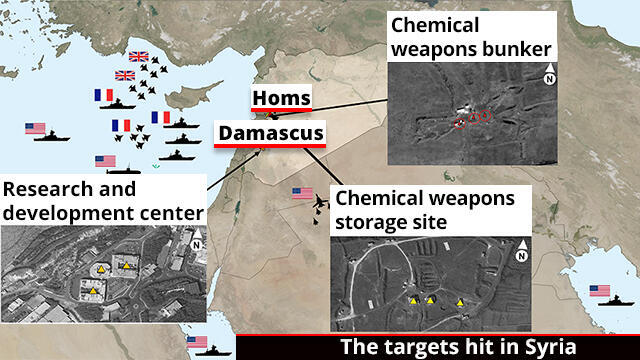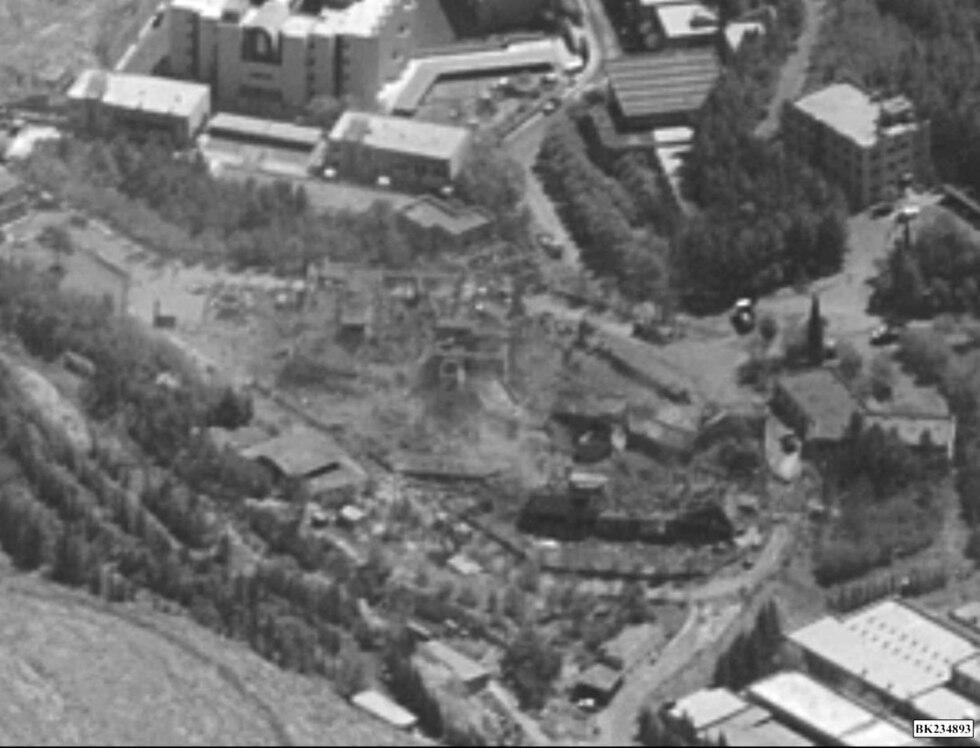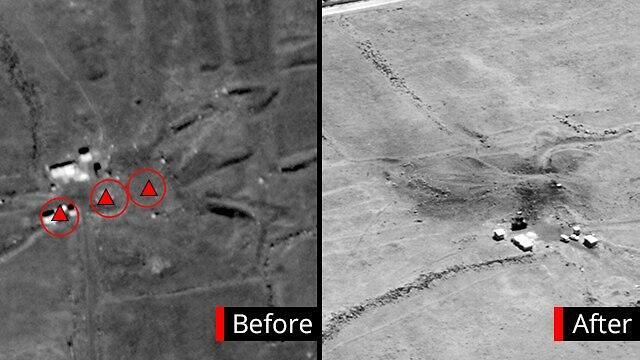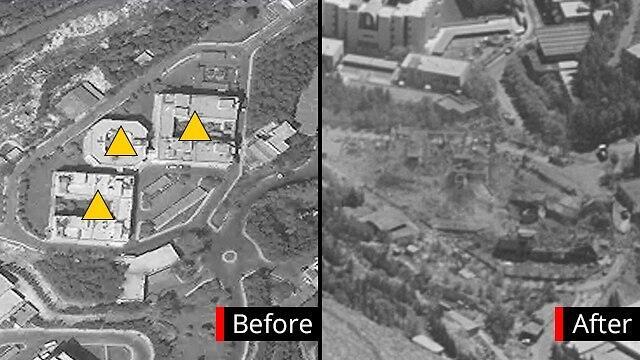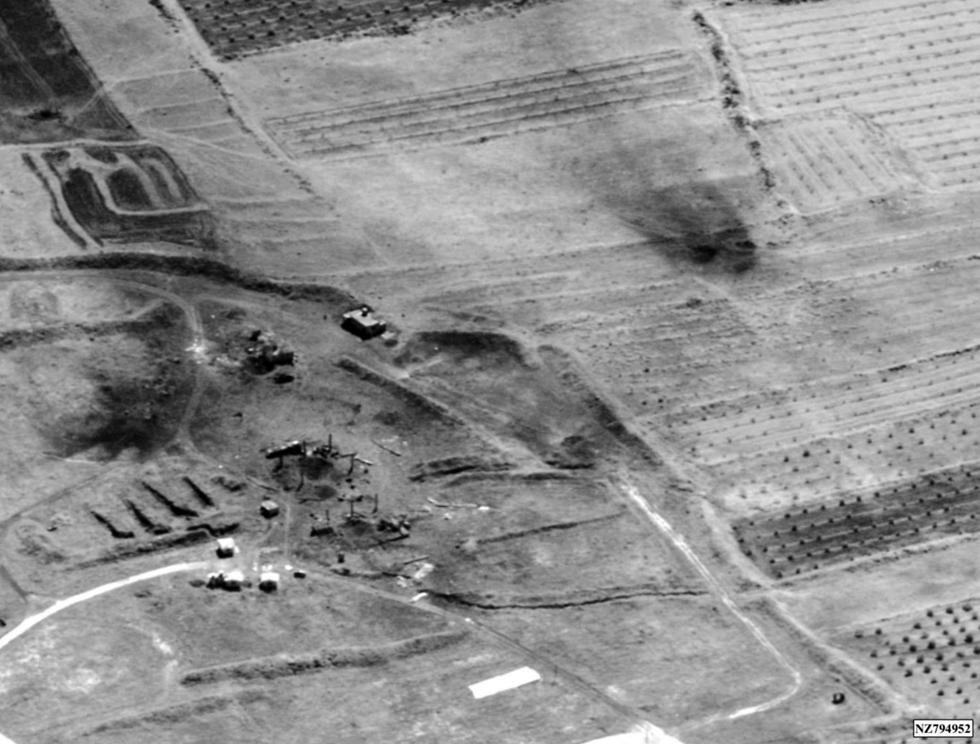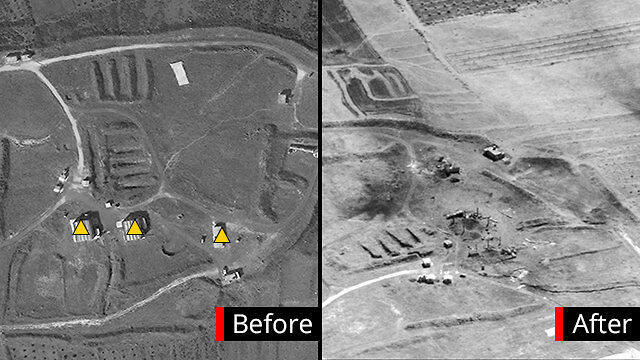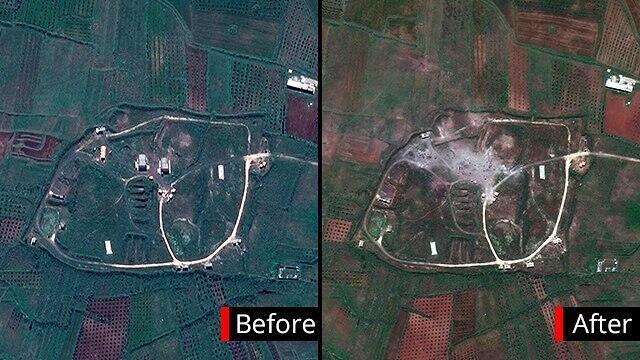Getting your Trinity Audio player ready...
The United States, France and Britain launched 105 missiles early Saturday in retaliation for a suspected poison gas attack in Syria a week ago, targeting what the Pentagon said were three chemical weapons facilities, including a research and development center in Damascus' Barzeh district and two installations near Homs.
Satellite photos showed considerable damaged caused as a result.
Director of the Joint Staff Lt.-Gen. Kenneth McKenzie said at a Pentagon press briefing Saturday that the "precise, effective" strike turned back the chemical capabilities of Syrian President Bashar Assad's regime a decade.
The US army further communicated that strikes completely ruined the regime's chemical weapons storage sites, also successfully targeting a bunker storing chemical weapons.
The missiles were launched from American, British and French ships, submarines and jets in the Red Sea, the Persian Gulf and the eastern Mediterranean.
Seventy-six were launched at the Barzeh R&D; facility—57 of them Tomahawk missiles and a further 19 air-to-surface missiles, according to McKenzie. "We have succeeded in destroying three structures on the outskirts of Damascus," he said, "one of the regions with the heaviest aerial defense fortifications in the world."
Syria, however, countered by alleging the center housed laboratories developing medical materials and made no reports on casualties. A video was published showing the ruins of building in the vicinity.
Ruins of the Syrian research and development center
(צילום: רויטרס)
Inspectors from the Organization for the Prohibition of Chemical Weapons (OPCW )visited the Barzeh facility last year. The facility was part of the Syrian Scientific Studies and Research Center (SSRC), which is, in fact, the Syrian arm for development of unconventional arms.
Sanctions were levied against 271 of the center's personnel last year following a chemical attack in Khan Shaykhun. Undeterred, chemical weapons at SSRC facilities—including the Barzeh one—were continually produced, according to an intelligence report published by the BBC last year.
The Barzeh facility, according to Western reports, specialized in installing chemical warheads onto long-range missiles and artillery shells.
Three buildings in a R&D center outside Damascus were hit
The lesser known site is Him Shinshar, west of Homs, where two targets were hit. The first target was a chemical weapons storage facility, completely destroyed after being hit by 22 missiles—nine of them American Tomahawks, eight British Storm Shadows, five American Navy cruise missiles and two French Scalp missiles.
The second Him Shinshar target was an underground bunker, which was said to have been "successfully hit and sustained significant damage" from seven missiles. It was not, however, stated the target was completely destroyed.
The underground bunker for storing chemical weapons was seven kilometers away from the Homs chemical weapons site.
The senior Joint Chiefs of Staff official added, "Initial indications say we have attained our military objectives in Syria."
The Joint Chiefs' director disavowed Syrian and Russian reports of the cruise missiles being intercepted before hitting their mark, saying, "None of the planes or missiles were hit."
Syrian antiaircraft forces, he said, had fired roughly 40 missiles, but mostly after the targets were already hit. The Russian Defense Ministry, meanwhile, claimed that 71 of the 103 Western cruise missiles were intercepted by Syrian antiaircraft systems.


